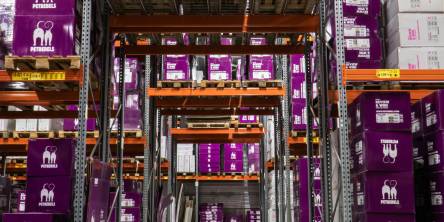Why Businesses Should Choose Snowflake for Data Warehousing

Unless you have been hiding in a cave somewhere, you would know and realize that the world is creating information at a stunning speed. While it is genuinely considered normal information that said data can now be turned into the groundwork of achievement for essentially any business in the present day and age. Why? Indeed, because data has now come to drive development, development, and key decisions for organizations across the expansive range of enterprises around the world. Thus, as organizations across the globe try to explore through this immense ocean of data that is being created each day, the requirement for a profoundly hearty and effective data warehousing arrangement has never been more noticeable.
Tragically, storing away and dealing with this information can end up being a seriously muddled endeavor, particularly with conventional data warehouses. What is the solution then, at that point, you ask. Snowflake, obviously.
I will now walk you through what is this Snowflake solution in the world of data warehouses. I will also talk about its benefits to tell why you too should pick Snowflake as your data warehousing solution.
What is a Data Warehouse?
A data warehouse is an enterprise system that analyzes and reports on structured and semi-structured data from various sources, including point-of-sale transactions, marketing automation, customer relationship management, and others.
Benefits of Data Warehouse?
- Ensuring Data Quality and Consistency: In the realm of cloud data utilization, its true value lies in quality and consistency. A data warehouse proves instrumental in enhancing data quality by addressing errors during the transformation phase, eliminating duplicate records, standardizing formats, and rectifying outdated data. This meticulous preparation ensures that organizations maximize their investment by storing high-quality, cleansed information in the data warehouse.
- Combining Diverse Data Sources: As various departments generate unique data, centralizing it becomes imperative. A data warehouse offers a solution, allowing businesses to amalgamate data from disparate sources and provide decision-makers with a comprehensive view. This consolidation prevents inconsistencies that may arise when data resides on multiple platforms within individual departments, fostering informed decision-making.
- Eliminating Data Silos: In the contemporary data-driven landscape, decisions demand fresh, diverse data. Data silos, where individual departments control information, hinder effective data management. A data warehouse eradicates these silos, providing end-users with a centralized, regularly updated source. This accessibility instills confidence in decision-makers, ensuring they have the necessary information for informed choices.
- Enabling Business Automation: Data warehousing facilitates business automation, reducing errors and expediting workflows. Automation spans data extraction, transfer, and analysis, streamlining processes. With tools like Whatagraph, scheduled data transfers to the warehouse can be automated, allowing for quicker insights and proactive issue resolution.
- Understanding Customers Through Personalization: In the current business landscape, personalized content is essential for engaging customers. Data integration within a data warehouse enables businesses to understand customer pain points, influencing purchase decisions, and assessing the impact of changes. This customer intelligence enhances user experience and loyalty.
- Gaining Historical Intelligence: While current information is valuable, historical insights are equally crucial for making informed predictions and understanding organizational evolution. Data warehouses store historical data, empowering decision-makers to analyze trends and impacts over time. User-friendly visualization tools, like Whatagraph, further facilitate easy access to metrics, enhancing productivity.
- Increasing Data Security: Data security is paramount, especially for businesses handling customer information. A data warehouse, by consolidating data in one location, enhances visibility for cybersecurity teams. Built-in security features block malicious SQL code, restrict data access, and specify user permissions. This centralized approach fortifies data security, deterring unauthorized access and safeguarding sensitive information.
What is Snowflake?
In the world of modern cloud data warehousing, Snowflake is a tool that helps companies manage and analyze huge volumes of the data they generate and gather. Snowflake does so with globally-celebrated levels of both flexibility and simplicity as well as speed.
But don’t go out looking for effective data engineering services for your project just yet; check out Snowflake’s benefits too.
Benefits of Snowflake for Data Warehousing Operations
- Cross-cloud deployment: Among Snowflake’s most compelling benefits is that it allows cross-cloud deployment. What that means is companies can pick the cloud provider they want. This translates into the flexibility to smoothly migrate workloads between cloud platforms such as AWS, Azure, Google Cloud, etc. and that without necessitating a whole lot of changes to the data architecture. Being able to deploy across several cloud services is a strategic advantage, which organizations can use to prevent vendor lock-in, optimize costs, and even use unique cloud services that best match their needs.
- Enhanced security: Security is as much a top concern for organizations as it is for Snowflake. This is why the platform gets plenty of security-focused features, starting with encryption of data at rest as well as in transit to ensure security across the data’s lifecycle. Snowflake also supports Multi-Factor Authentication (MFA) and Role-Based Access Control (RBAC) which allows companies to define granular access controls based on roles. Oh, and let us not forget about the data masking, again because of user roles, to make sure that only authorized people are able to see the full dataset.
- Automatic optimization: Snowflake gets automatic query optimization — a feature that does away with the complex challenges of manual performance tuning. What I mean to say is that the platform's query optimizer analyzes queries in real-time and then, generates an execution plan with the most efficiency levels. What you get, then, is improved performance and reduced query response times. This feature is super important if you are looking to maintain high-performance levels in dynamic environments.
- Agile scalability: Snowflake's architecture is engineered so that it separates storage and computing resources. As a result, each component can scale independently. The advantage companies gain consequently is that they can scale their computing resources up or down based on the demand they are currently experiencing and that too without taking a toll on data storage.
There you have it, folks — some of the key reasons why you too ought to opt for Snowflake
Similar Articles
Software development refers to the procedure of constituting and nourishing software applications. This provokes the utilization of many fundamentals and practices. Software development targets constitute structured, dependable, and beneficial software.
Designing a data warehouse is a strategic activity that builds the groundwork for strong data management and analytics capabilities within a business. In today's data-driven world, the systematic creation of a data warehouse is not only a technical requirement but also a critical step in harnessing the power of information for informed decision-making.
The integration of Internet of Things (IoT) technology into the construction and real estate sectors, which include buildings, infrastructure, homes, and businesses, is predicted to increase dramatically in the future. Despite this predicted expansion, the construction industry is behind other industries in terms of IoT adoption.
In this dynamic world of innovative and transformative technology, the use of Minimum Viable Product (MVP) has proven to be a winning strategy for success.
While monolithic applications may have waned in popularity during the era dominated by the cloud and microservices, interest is resurgent. Organizations, in considering their position on the application modularity spectrum, are now examining both the advantages and drawbacks of relying on microservices.
Data visualization is an indispensable tool that allows us to transform raw, and often unstructured data into insightful visuals, identify patterns, and communicate these insights to the wider audience and stakeholders.
For modern businesses to thrive, ensuring the effective management of inventory stands has become vitally important. Inventory management stands as a cornerstone of success. And the emergence of the Internet of Things (IoT) has introduced a new era of connectivity and efficiency across diverse industries.
Do you know what the following e-commerce companies have in common: Amazon, Walmart, eBay, and more? All of these e-commerce companies' apps make use of Java. Java is decidedly among the leading choices of programming language for e-commerce applications because it offers a world of benefits; for example, since Java code can be run on any platform with a Java Virtual Machine (JVM), users of e-commerce apps made with Java can access the said apps on a variety of devices.
Nikola Tesla in 1926, once described what is now called a mobile phone as a telephone that can fit into one's “vest pocket.” As otherworldly as that idea was then, nearly a century later, the reality is even more astounding.








